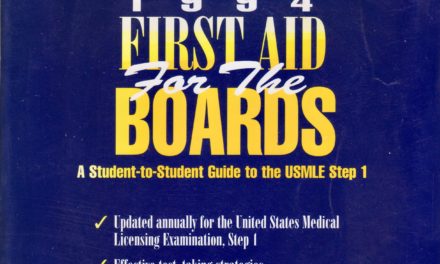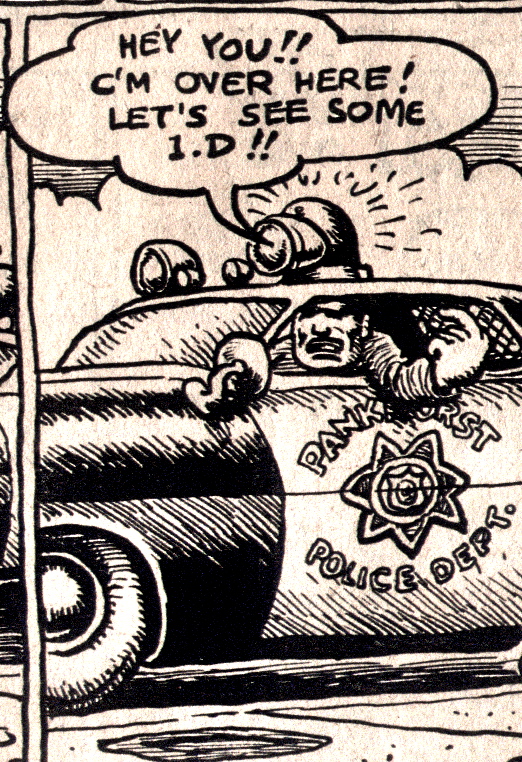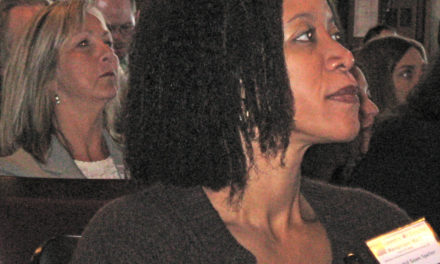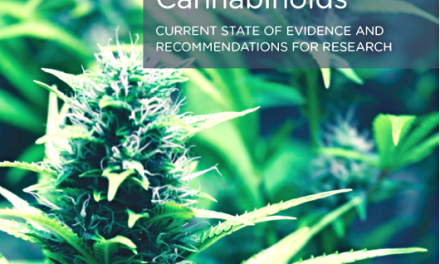Lawrence Ringo, Plant Breeder
Lawrence Ringo died in early April, 2014. He was a lifelong cigarette smoker. Cancer got him before he reached 60.
He was a tough guy in love with life, fulfilled by what his own life contained: plants and music, friends and family. I met him in the winter of 2008-’09 through Samantha Miller of Pure Analytics lab, who had heard we were on the lookout for CBD-rich plants. I interviewed him that day for the Anderson Valley Advertiser. Unlike most growers and plant breeders, who are understandably reticent when it comes to describing their work, Lawrence was bold and forthright. He and Samantha gave Project CBD a great boost in those bygone days when we still felt it necessary to define cannabidiol for readers of the AVA.
Lawrence Ringo was so physically tough that in December, 2013, he took part in a panel at the Emerald Cup in Santa Rosa showing no sign that he was already gravely ill. His voice was robust, his color ruddy. His esteemed colleague DJ Short was also on the panel. Some excerpts follow. —FG
Moderator: Ringo, what’s your view on feminized strains and auto flowering?
Ringo: I’m an outdoor grower all the way and I think the feminization of seeds is a pollution of our gene pool.
DJ Short: I’ve sampled white widow feminized and non-feminized. And the non-feminized always stands above the feminized. I only have time for forward filial crosses. Maybe someday in the future if I’m looking to stabilize something I might use it but there’s just too much else to play with.
Moderator: How do you select your females?
Ringo: By smell, taste, the way it looks, the way it’s been performing over the years. In the last four years I’ve been using science, too. I give the lab cuts and they test them out and tell me if I’ve got CBDs or THCs. It’s been really cool —an addition to what I’ve been doing my whole life.
Moderator: How do you select your males?
Ringo: The males, I’ve always walked up to the males at eight [weeks] and you can break the stem and you can smell the bouquet on ‘em and if you’re satisfied with that bouquet at that second, then that’s your male you’re using. Plus the way it grows and looks. The bouquet and the structure. After a while you just learn, you see it and you grab the ones you want to work with. And now we’ve got science, which makes it quicker and easier to stabilize a strain. It’s really cool.
DJ Short: My primary method of judging cannabis is by the effect of the finished product —the properly harvested and cured finished product. Everything else —flavor, aroma, structure while growing, flowering time— those things are secondary considerations… I’ve been smoking my Blueberry for about 30 years. It takes about half as much for me to get the same effect now as it did back when. That’s part genetic, part environmental. Something to take into consideration: a nice, long shelf-life. That way you can get a good cure to it…
As far as the males go, as far as I’m concerned there is no alternative to pollinating the females, harvesting those seeds, curing them and growing them out to see what you’ve got. You can rub the stems and search for resinous males. You can smoke the males —I recommend the Volcano vaporizer for this—to see if they have an effect. You should be at your baseline state to judge the effect.
Ringo: Women smoke the males if I grow them out. My girlfriend Kat will get blazed smoking the males. Now I wait until the male pollen sacks are just starting to show and I’ll cut off the whole flower top and send it to the lab and see what it’s putting out. They get some good results that way. I’m seeing 18 percent CBDs and THCs. We are very lucky to live in this time and this point. Thank you, universe…
Pollen can get you high if you don’t know about it. When I collect it sometimes I have my tray and I’ll get the plant to come over and I’ll dump the pollen on it and it’ll poof and the pollen will go all over my face and three hours later I’ll wake up and “Wow, I’m covered with pollen.”
Moderator: What characteristics do you avoid when you’re selecting plants to breed?
Ringo: You start 50 seeds and you can look at them growing and go “This is lame… This is lame…” If they’re not popping out and growing, if they stall at all, you just pull ‘em out right there. See ya. ‘Bye.
Moderator: How many generations to you breed a strain before you release it or call it your own? You have this “Ringo D” that you’ve been working on for nine years. Do you ever release F1s or do you wait till they’re stable?
Ringo: I mainly release F1s when I’m selling to the public. Lately I have a library —a clone library and I save all my pollen so I’m able to recreate whatever I need whenever I need it. So if I’m low on a strain I’ll pull out the clones and I’ve saved the pollen and I’ll put it on there and make that strain.
Moderator: Back-crossing strains? Is it something you practice?
Ringo: Oh, yes. Every year. The clones are what I do it with. Keep the same male with the same clone. I’m after this Louis right now. Every year for the last five years I’ve crossed the Louis with this Sour Diesel strain that I made, then I take the Sour Diesel to Louis strain and I keep crossing it back to the Louis strain every year. That’s the way I try to stabilize all these strains. If you’ve got the clone in your library, you’re happening.
I think there’s something synergistic about cannabis and us. When we grow it we connect with it. If you open up to it, it just tells you what’s good and what’s bad. It’s an intuitional thing that women have. Like DJ said earlier, it opens up that intuitional feminized side of us. And it’s been like that from day one. I don’t know how to explain it.
Moderator: Do you breed for pest resistance or mold resistance?
Ringo: I have to where I live. We grow outside, strictly. I live on a ridge top and I look down on the fog. So I look for strains that will not powdery mildew or rot. It’s difficult, but you can locate those strains and get them into your breeding program and after a while you’re seeing strains that you’ve been growing forever not molding or rotting. You give that strain to somebody else and they can get rid of their mold and rot. If you’re getting mold and rot you should clean up your environment. You’re over-fertilizing, you’re doing something you shouldn’t be doing.
DJ: My solution was to grow in the high desert and you’ll avoid a lot of those problems. And quarantine your clones.
Moderator: What goes into breeding a CBD-rich strain?
Ringo: One day four years ago I took all my strains —about 25 of them— and had them all tested by Samantha Miller. And one was 16% CBD. And I was like “what’s that?” And Samantha schooled me. So every year I get my ratios from the lab and I use that ASK SAMANTHA male and that female, period. Every year since doing that has proven to be awesome. I worked with the ACDCs and the Harlequins, I made Harle-Tsu, Canna-Tsu, an ACDC-Tsu. They’re all medicine. When you give somebody a spray of tincture that you made and they have Parkinson’s and they’re sitting there shaking and they’re telling you they’re on eight different medications and they’re like this and you squirt one of these —I gave this woman three squirts and within three minutes she’s not shaking anymore. It does the same thing for kids with Dravet syndrome. It’s a neuro-corrector. It gets in there and it helps!
DJ Short: … Always put quality above quantity.
Ringo: I used to think “the bigger the better.” As I got older it got harder to take care of these big plants where you need ladders. I never got the dankest buds off the biggest plants. They have no taste, they’re full of fertilizer. To get plants that big you’ve got to pump them with a lot of stuff. Plants can’t take that much, they only use a fraction of what people are giving them.
DJ Short: The quantity thing is tied into limiting the number of plants we can grow. Do a search on Afghan or Lebanese hash fields and see what plants they’re growing. These people have thousands of years on us. We have things to learn from them in terms of extract production.
Moderator: Where would you tell some aspiring plant breeder to start?
Ringo: I would tell ‘em to start in their backyard. Really. Grab some seeds and some soil, pick up a book or look online. There’s plenty of stuff on YouTube right now. You can learn how to do anything on YouTube, and it’s free. The main thing is to love what you’re doing. I love gardening, period. I love being out in the garden. I love being in the sun, in the dirt, my feet in it, muddy, dirty, sweaty, I love it. It’s what I do, I’m a farmer. If you love doing it, continue. If you don’t do it good, then you should do something else.
DJ Short: Keep good notes.
Moderator: What is Oracle?
Ringo: Oracle I got from a company called BC Seeds in British Columbia which is a pretty lame seed company. They pretty much polluted my seed crop one year with a feminized version —the only time I used a feminized seed in my crop and it hermy-ed [grew into a hermaphrodite with male as well as female flowers] and it whacked a bunch of plants and I had seeds everywhere. It took me about three years to get it out of there.
I bought “Euphoria Unlimited” and “Oracle” —supposed to be the strongest strains in the world— from BC Seeds. He was advertising them at 37% THC. I grew them out and had them tested. The Oracle was about 14% THC. I bought em —I spent too much money, but it wasn’t the money, it was the seeds I didn’t want.. He had one that was 18% called Indica Something. It was lame. It continued to hermy. It was the biggest nightmare I ever had as a breeder. You try to do something good and it’s really a drag. They kept hermy-ing… There are now two versions that everyone’s calling Oracle, but it’s not, it’s ACDC. There’s this guy’s version from BC Seeds, and there’s this ACDC that everybody’s calling Oracle. Somebody gave me both. It’s the same thing. Same terpene profile —we had it labbed out.
Moderator: How important is your water source? Do you test your water?
Ringo: I use water from a spring-fed pond. It’s perfect. I had the pH tested. It was 7.5 to 8, depending on the time of year. The guy who tested it said it was so pure he wished he could drink it.
Moderator: Have you bred indoors?
Ringo: Never have but I’m going to try it with LED lighting so I can continue what I’m doing with the CBDs. I made a bunch more this summer and I want to start all those this year.
Moderator: Do you think strains will express themselves differently if grown indoors?
Ringo: Completely. There’s a lot of things that aren’t inside that are outside. UV light. The wind. The rain. The fog. The bugs and the birds landing on them. Our touching them. We all have an effect on the way it grows.
(The conversation turned to the importance of “passion.”)
Ringo: I was on passion my whole life. And then science came around and I’ve seen it with my own eyes. I believe in using the testing. You can’t look at a plant and say “Wow, that’s going to be killer CBD,” because you can’t tell. It’s all in the molecule that grows on the bush. The only way I can do it is to take the top off and take it to the lab and have them test it.





